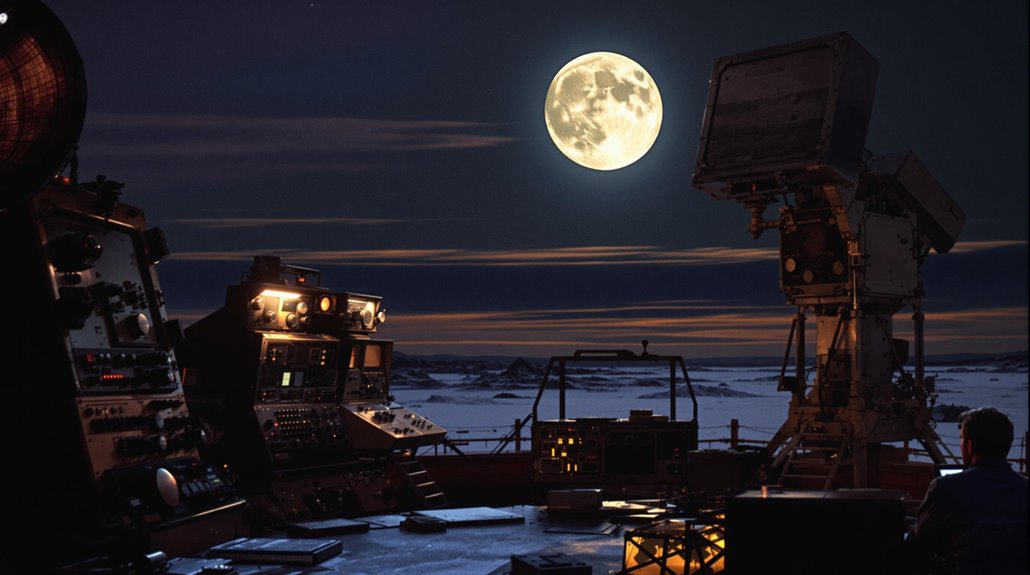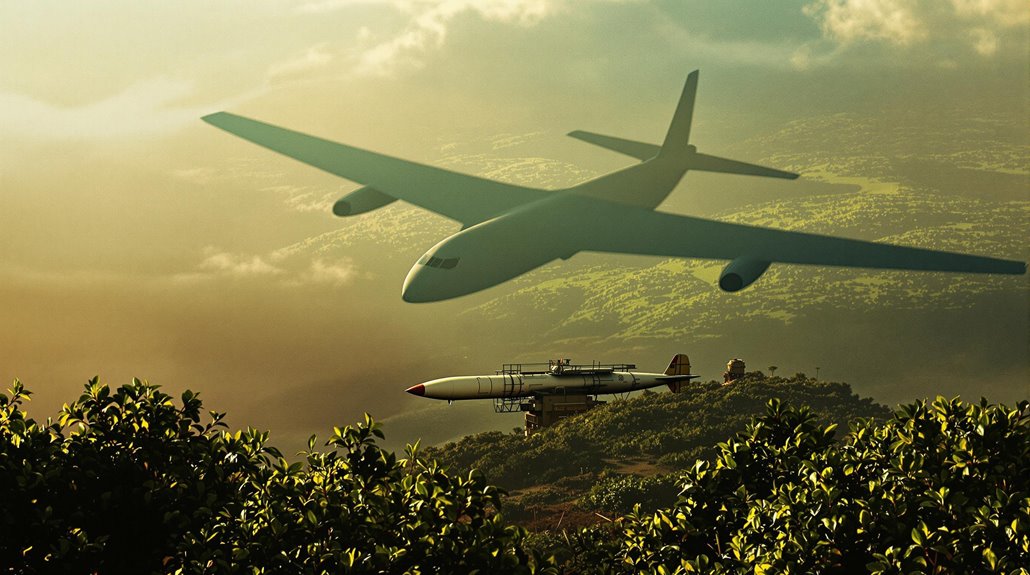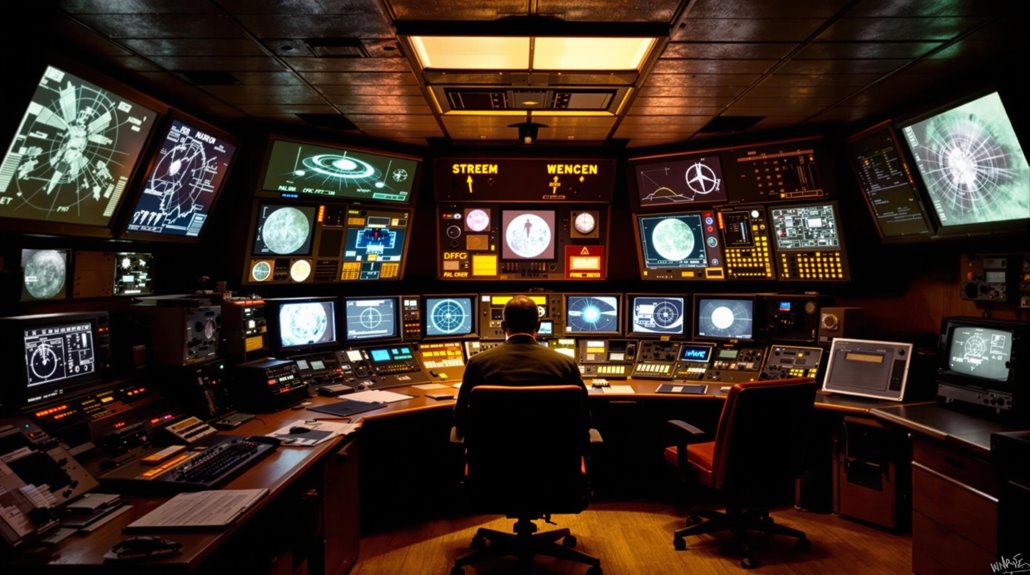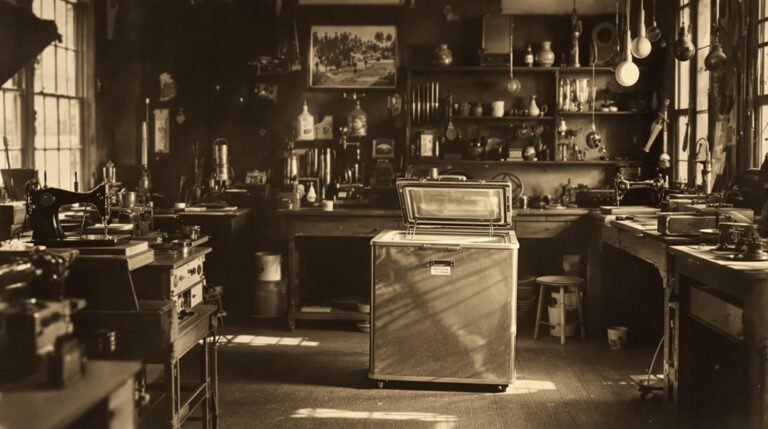The Moon Accident That Almost Triggered World War III
You've probably heard about close calls during the Cold War, but here's one that'll make you pause: In 1960, the Moon itself nearly sparked a nuclear catastrophe. When NORAD's radar systems mistook moonrise for a massive Soviet strike, the U.S. military machine sprang into action with a 99.9% conviction that nuclear war was imminent. What happened next would reveal just how fragile our early warning systems were—and how close we came to the unthinkable.
The Night the Moon Became the Enemy

While the Cold War kept military commanders on constant alert for Soviet attacks, nobody expected Earth's own moon to nearly trigger World War III.
On October 5, 1960, you would've witnessed unprecedented tension at NORAD's command center when their radar system in Thule, Greenland detected what appeared to be a massive Soviet missile launch.
The moonrise misinterpretation occurred when radar waves bounced off the moon as it rose over Norway, creating a reflection confusion that matched the exact trajectory of an expected Soviet attack.
The situation echoed the intense space rivalry, as the Soviets had already achieved major victories with Sputnik 1's launch in 1957.
The system reported a staggering 99.9% certainty of imminent danger.
What made the situation even more perplexing was that Soviet leader Khrushchev was in New York at the time.
With U.S. missiles on hair-trigger alert, the incident could have easily escalated into a catastrophic response.
Scientists eventually solved the radar reflection confusion within weeks, but not before this celestial false alarm exposed dangerous flaws in early warning systems.
Nuclear Command's Critical Moments
Throughout the Cold War, several heart-stopping moments brought humanity closer to nuclear annihilation than the Moon incident.
You might think nuclear decision making followed strict command protocols, but reality proved far more chaotic. During the Cuban Missile Crisis, a Soviet submarine nearly launched a nuclear torpedo, while American F-102A pilots had independent authority to arm nuclear weapons. Lieutenant Colonel Petrov helped prevent disaster when he correctly identified five US ICBMs as false alarms in 1983.
In 1979, a NORAD computer glitch falsely reported 2,200 incoming Soviet missiles, leaving officials just minutes to decide humanity's fate.
NATO's Able Archer exercise in 1983 so convinced Soviet leaders of an impending attack that they readied their nuclear forces. The Norwegian rocket incident in 1995 caused similar panic when Russia detected a scientific rocket launch and President Yeltsin activated his nuclear briefcase in response.
Even individual personalities played a frightening role – like when a reportedly intoxicated President Nixon ordered a nuclear strike against North Korea in 1969, only to be talked down by Kissinger.
How Radar Technology Failed Us
The Moon's unforgiving surface has claimed many spacecraft due to radar technology failures, with Luna-25's crash serving as the latest casualty.
You'll find that radar accuracy and software reliability have been persistent challenges in lunar missions, as evidenced by multiple crashes from Hakuto-R to Beresheet. The history of these failures shows a pattern where sensor malfunctions and software glitches lead to catastrophic endings. The abnormal control complex contributed significantly to Luna-25's demise, adding to the list of technical failures in lunar exploration. The impact was so severe that the spacecraft hit the lunar surface at 500 kilometers per hour, causing complete destruction.
- Luna-25's engine fired for 43 seconds longer than planned, causing a fatal trajectory
- Hakuto-R's software misinterpreted terrain data over a steep crater
- Surveyor 2's thruster malfunction led to an uncontrollable spin
- Modern missions still struggle with sensor fusion despite advanced technology
These incidents highlight how critical proper radar systems and fault management are for successful lunar landings.
Cold War Context and Global Tensions
During the peak of Cold War tensions, both superpowers viewed every technological advance as a potential military threat, creating an atmosphere where even lunar missions carried heavy political implications.
You'd have found yourself in a world sharply divided by ideological conflict, where the US and USSR competed for global influence through their respective alliances, NATO and the Warsaw Pact.
The superpower rivalry had already brought the world to the brink of nuclear war during the Cuban Missile Crisis, and space exploration became another battleground for dominance.
Following the launch of Sputnik 1, you couldn't separate scientific achievements from military capabilities – every satellite could be a spy tool, every rocket a potential weapon.
This climate of suspicion and mistrust meant that even innocent lunar activities could be misinterpreted as acts of aggression. Both sides maintained extensive spy networks and operations throughout the conflict, further heightening paranoia about each other's space activities. The intense arms race led to both nations developing intercontinental missiles, drastically escalating the potential for global destruction.
Legacy and Lessons for Modern Defense

Looking back at this near-catastrophic lunar incident, you'll find its impact reverberating through modern defense systems and protocols.
Today's deterrence strategies heavily emphasize technological safeguards and ethical considerations that emerged from this historical close call. The military's increasing focus on unmanned systems has revolutionized how we monitor and respond to potential space-based threats. You'll notice how space-based early warning systems now incorporate AI-driven verification processes, while maintaining vital human oversight in critical decisions. The Cold War era initiative to detonate nuclear weapons on the moon serves as a stark reminder of past military extremes.
Key lessons that shaped modern defense include:
- Implementation of multi-step verification protocols to prevent false alarms from triggering military responses
- Integration of advanced satellite systems with enhanced discrimination capabilities
- Development of technological ethics frameworks governing AI's role in defense decisions
- Establishment of direct communication channels between space-faring nations to prevent misunderstandings
These adaptations reflect a deeper understanding of how space-based incidents could inadvertently escalate into global conflicts.










